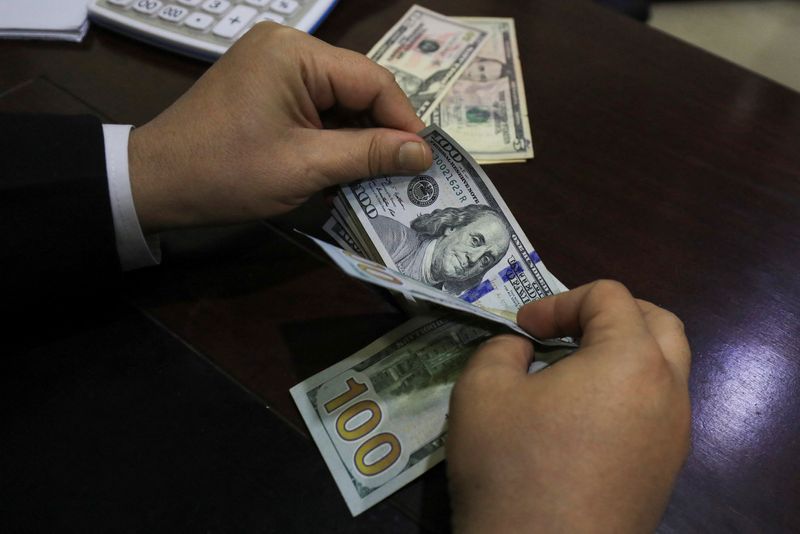
©Reuters. A trader counts US dollar banknotes at a currency exchange stand in Peshawar, Pakistan, January 25, 2023. REUTERS/Fayaz Aziz
By Rae Wee and Harry Robertson
SINGAPORE/LONDON (Reuters) – The dollar slipped on Monday, with the threat of currency intervention by Japanese authorities and a government-led rally weighing on the U.S. currency.
The Japanese yen was marginally higher on the day and last stood at 151.29 per dollar, after hitting a four-month low of 151.86 last week, leaving it within striking distance of the low 32 year close to 152 per dollar touched in 2022.
Japan’s top currency diplomat said on Monday that the yen’s current weakness does not reflect fundamentals, adding to rhetoric from government officials who have stepped up warnings about the currency’s decline in recent days.
The yen fell despite the Bank of Japan raising interest rates from negative territory last week. Traders believe that rates in Japan will remain low for some time and thus the large interest rate gap with the United States will remain in place, increasing the attractiveness of the dollar.
“The verbal intervention from Japanese officials is making 152 a very strong near-term resistance for dollar/yen,” said Carol Kong, currency strategist at Commonwealth Bank of Australia (OTC:). “I think this prevents the dollar/yen from moving substantially higher.”
The latest fell 0.1% to 104.35, after posting a weekly gain of nearly 1% last week.
The Chinese yuan was the biggest mover in currency markets on Monday, rising about 0.3% in onshore markets to 7.21 to a dollar, while its offshore counterpart rose about 0 ,4%.
Sources told Reuters that China’s major state banks sold dollars for yuan in onshore markets on Monday, helping to reverse a sudden drop at the end of last week.
China’s currency has come under pressure from growing market expectations of further monetary easing to support the world’s second-largest economy.
“Support for the renminbi (yuan) helped limit the dollar’s advance on Friday, as did some rather aggressive verbal interventions in support of the yen from Japanese officials,” said Chris Turner, global head of markets at ING.
European currencies regained ground on Monday, following last week’s decline, as investors bought the dollar on the basis that the Federal Reserve appears to be in no rush to ease rates compared to some of its rivals.
Bets for a rate cut in June by the European Central Bank and the Bank of England (BoE) rose sharply after the Swiss National Bank became the first major central bank to lower borrowing costs last week and BoE governor Andrew Bailey told the Financial Times that rate cuts “were in play” this year.
The euro rose 0.1% to $1.0818, falling from a nearly three-week low. The pound rose 0.08% to $1.2611, after losing more than 1% last week.
Elsewhere, the Australian dollar rose 0.21% to $0.6528.
rose 5.6% to $67,030. It has fallen about 9% since hitting a record high above $73,800 on March 14.